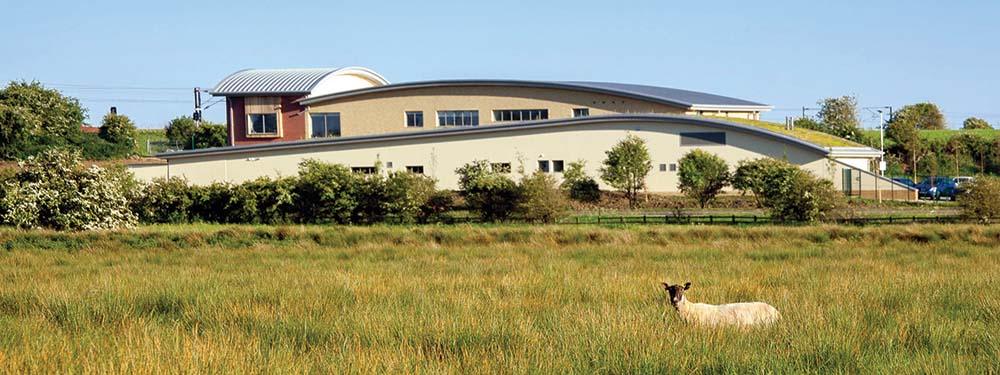2 Jul 2022
Changing the fortunes of a large veterinary hospital can be like trying to do a 180 in an ocean liner – it’s a slow and complicated task. But the team at Wear Referrals has done just that, and the practice is once again steaming in the right direction, as VBJ discovered…

Image © Wear Veterinary Referrals
Staff: full-time vets 22 • registered veterinary nurses 68 • student vet nurses 8
PCAs 11 • front-of-house staff 15 • practice administrators and support staff 12
When Darren Stubbs was head hunted to take on the role of hospital director at Wear Referrals in County Durham, he took the job with no prior experience of the veterinary sector.
With a background in retail going back more than 30 years, Darren knew plenty about leading big businesses with lots of moving parts, but aside from the occasional visit to the vet with his two German short-haired pointers, the infinitely complex world of veterinary referrals was a total mystery.
However, since joining Wear in September 2019 following its acquisition by Linnaeus, Darren has helped transform the fortunes of the practice after a challenging transition to corporate ownership.
Following his arrival 14 months after the sale of the practice to Linnaeus, one of the first jobs was to manage the cultural transition and help ensure team members felt engaged with the wider group they were now an integral part of.
Darren said: “They weren’t seeing the benefits of being part of the group so there was a big cultural change in that we really needed to help the team feel positive about being part of Linnaeus.
“It had taken a significant amount of time to recruit someone into the hospital director role at Wear, and it was very clear when I joined that there was a huge opportunity to step in and take ownership of the direction the business was going. So, I came in and just tried to identify what it was we needed; at that point the team could absolutely have taken advantage of me, but they didn’t, they really helped me to understand what they needed from a leadership perspective and they also helped me understand the veterinary business, for which I have a massive amount of respect for them.”
Aside from the leadership opportunity, another issue was the perception among first opinion practices in the area that Wear Referrals was only interested in making as much money as possible. As the only multi-disciplinary referral centre in the region, Wear had long enjoyed something of a monopoly, but all that changed following the sale of the practice when a group of clinicians left the business to set up on their own.
Darren added: “We had an added challenge in that a competitor opened shortly after I joined.
“Some of the vets who set up the new referral business had actually worked here, and they had gone off and locumed around the local practices and built the relationships, and then set themselves up. It was a challenging time as there really had not been much competition up to that point.
“They had a significant impact on our business when they opened and left gaps in our services when they moved, so we had a team to rebuild, but we also had relationships to build with primary care vets across the region.
“We hadn’t had to build those relationships before; Gerard had never had to invest heavily in marketing because there was a positive clinical reputation and there wasn’t anyone else round here, so they got the referrals. But they didn’t have the relationships with the primary care vets, and nobody really knew the people in here, and there are some amazing people.”
“Unfortunately, the hospital had also acquired the reputation of only caring about money, so we really had to set about promoting the high standard of treatment, and the brilliant compassion and care; we had to change our reputation through really highlighting what we do from a care perspective.”
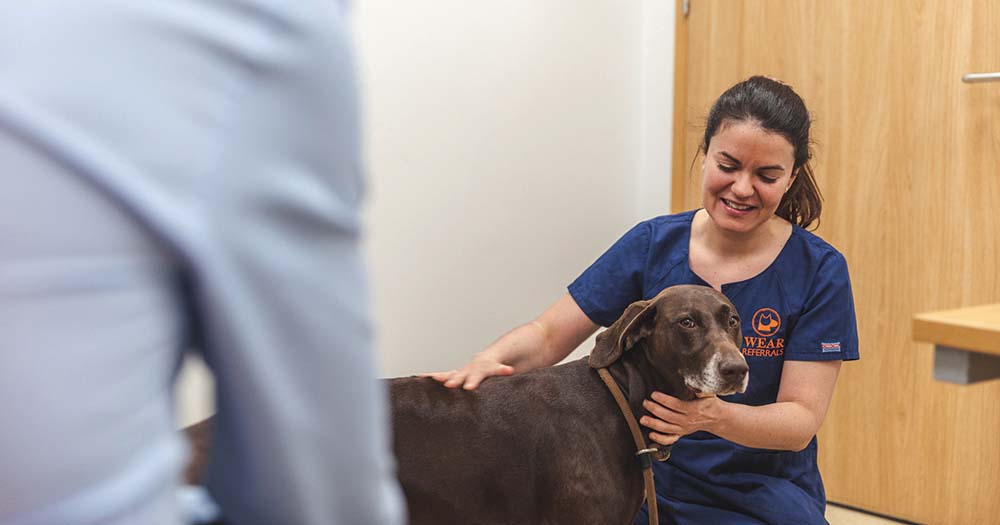
In a bid to build bridges, one of the first things Darren and his newly appointed business relationship manager, Olivia Yates, did was to arrange a series of visits to primary care practices, along with members of the referral team.
For Darren and his team, this was no mere PR exercise, it was about building relationships with first opinion vets, sharing advice, and highlighting the dedication to clinical excellence and animal welfare that drives the business.
During this period, the hospital also recruited Ben Harris, an internal medicine specialist from Northwest Veterinary Specialists, as its clinical director. It finally seemed that all the pieces were beginning to fall into place – and then COVID hit.
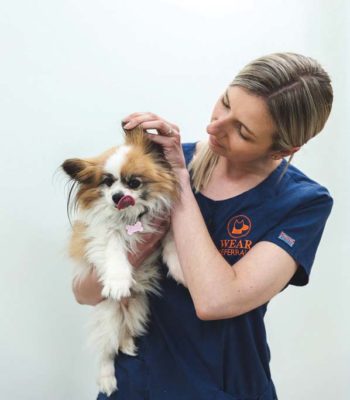
Pandemic lockdowns soon put a stop to these in-person visits; however, coronavirus did provide an unexpected opportunity for Wear to really show what it was made of, as Darren explained.
“Coronavirus proved to be an unlooked-for opportunity, as suddenly we were in a position where we were able to help the first opinion practices in this area,” he said.
“We were only able to see emergency and urgent cases then – as everyone else was – but when primary care practices couldn’t open because they didn’t have the staff due to a massive COVID outbreak or furloughed team members, we were able to help by seeing their emergency and urgent cases. So, we stepped in and helped these practices that previously might have thought the only thing we cared about was money and didn’t have a strong relationship with us.”
During the height of the pandemic, it was the intern team at Wear that shouldered much of the burden and carried out the bulk of the extra primary care work.
Darren added: “Our interns were amazing during that period and really changed the roles that they had – they are obviously here to get experience of referral work, but they did a lot more primary care work than they were used to at that time.
“We made the most of that chance to help other practices, and that really helped us develop better and stronger relationships with those practices because they could see we wanted to help, and we weren’t just doing it as a business ploy.
“They knew we were doing it because we genuinely wanted to help, we had a bigger team and there was more we could do under those circumstances.”
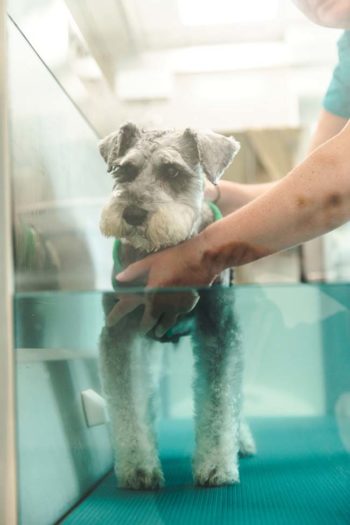
As well as providing the chance to develop more positive relationships with practices in the region, the pandemic also saw an increase in the number of new referral relationships with practices from outside Wear’s traditional radius in the north-east.
Although the team stuck rigidly to the regulations, the hospital remained “as open as possible” throughout the coronavirus crisis, something not all practices were able, or prepared, to do.
Darren said: “We were available for people in a way that not all other practices were at that time.
“With the work that we have done building relationships locally and supporting those guys, and with Olivia being such an effective conduit for those relationships, we were able to start to grow the business again.
“We were seeing more referrals coming in during the period of COVID and we also started to see more referrals coming in from other areas like the north-west, Lake District and the north lakes areas, and also North Yorkshire – so we expanded our radius.
“We got a lot of advice requests and were able to start building relationships with people who were outwith this region. That was a positive period, as we started getting more referrals back, and started growing it. Our reputation has improved, our Net Promoter Score has been very positive and the feedback we now get is generally very, very positive.
“We rarely get people saying anymore that the only thing we care about is money, it is inevitable we still get the odd one as we are not cheap, but that is because we provide an exceptional level of service and that costs money, and we cannot apologise for that.”
Since 2019 Wear Referrals has grown from 130 associates to 165 and now employees a team of 16 specialist vets across the areas of neurology, orthopaedics, oncology and soft tissue surgery, internal medicine, cardiology, ECC, anaesthesia and diagnostic imaging, as well as offering referral services in rehabilitation, physiotherapy and hydrotherapy. Wear also now provides out-of-hours cover for 25 local first option practices.
Darren added: “I spent time with all the surgeons in theatre and I spent time with the medics, cardiologist, imaging team and anaesthesia team, just to try to get an understanding of what we do and how we do it.
“It also helped me understand what they needed from me to help them move forward – a lot of it was just listening and engagement – ‘what’s the plan?’ and ‘where are we going?’.
“The thing that drove me to join this business was everyone having that common purpose about the welfare, and exceptional treatment and care we provide for animals.
“And the focus has not just been on the clinical teams; it takes everyone to make the hospital work, which is why we have also put a lot of focus on our front-of-house teams, too.
“They all have at least bronze accreditation with the BVRA [British Veterinary Receptionist Association], some also have silver and I am delighted to say two of our team have gold accreditation.”
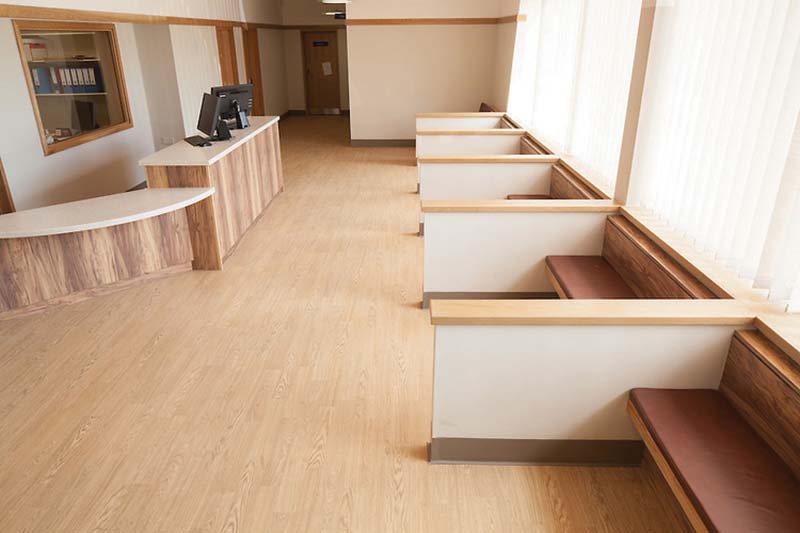
Like all veterinary practices – both large and small – recruitment has been a big challenge, especially in a relatively remote part of the country.
However, with such a motivated clinical team and a positive workplace culture now in place, Wear has successfully overcome the “southern bias” to bring in top talent.
“What can be difficult for us in our recruitment is our location, especially when we are trying to recruit vets from outside the UK, in particular; there is a huge southern bias,” Darren added.
“A lot of the people we have recruited over the past couple of years have actually already been here as locums, and as we have such a fantastic team who are so welcoming to visitors and hugely professional at what they do means those locums want to come back.
“So, how we often deal with recruitment is we ask people to visit, they come and they see the facilities, and they also get the chance to see what the team is like and actually what it is we are trying to develop from a cultural perspective.”
Another part of the recruitment strategy is for Wear to “grow their own” talent, as Darren explained: “We have either recruited or trained 13 specialist vets since the beginning of last year, so that has been huge growth for us and an important direction we wanted to take.
“We also added oncology last year, with a fantastic oncologist called Aaron Harper, who moved up from Southfields and is originally from the area.
“But a big part of what we want to do is develop our own talent in-house; we have a medicine residency programme, and we have recently got approval and are interviewing for a second resident in internal medicine, one in oncology and one in surgery.
“So, we see a massive part of what we will be doing going forward in terms of recruitment is to be developing our own talent.”
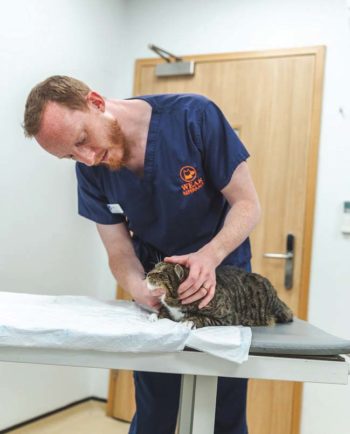
While Darren admits the current cost of living crisis means challenging times lie ahead, he remains confident Wear Referrals can continue on its positive trajectory.
Having expanded the market for its services, the hospital continues to look for new ways to engage and develop; neurologist Clare Rusbridge recently hosted a live CPD event, which gathered positive reactions, while the chance to feature in a BBC TV series will also do much to enhance the hospital’s profile.
Darren said: “We have also got TV cameras with us at the moment as the hospital is going to be starring in a 10-part BBC series that is going to be aired in September this year.
“A north-east production company approached us as the BBC has a push on for more regional programming and they want to showcase the exceptional high standard of work being delivered in this region, and the people and the characters who deliver it.
“I have a huge passion for the work that we do and I want to showcase the people we have, the fantastic facilities and the amazing characters we have on the team – I want people to see, not just the level of expertise we have, but the level of care from the team here. It is exceptional and people will see that.
“It is bloody awful having a camera in your face when you are trying to give a motivational speech to your team at the beginning of an open day, and I will participate as little as possible, but I can’t avoid it completely.
“It is going to be really interesting to see what the reaction is and I hope it is going to show what it takes to run a referral hospital – it takes 165 people who are absolutely dedicated to what they do.”
